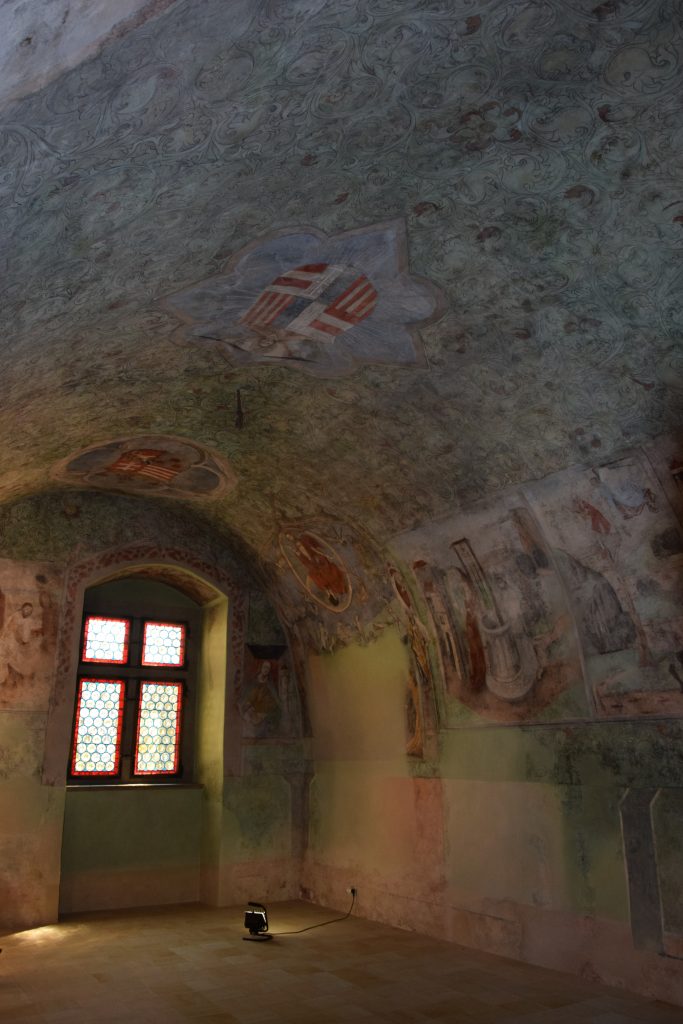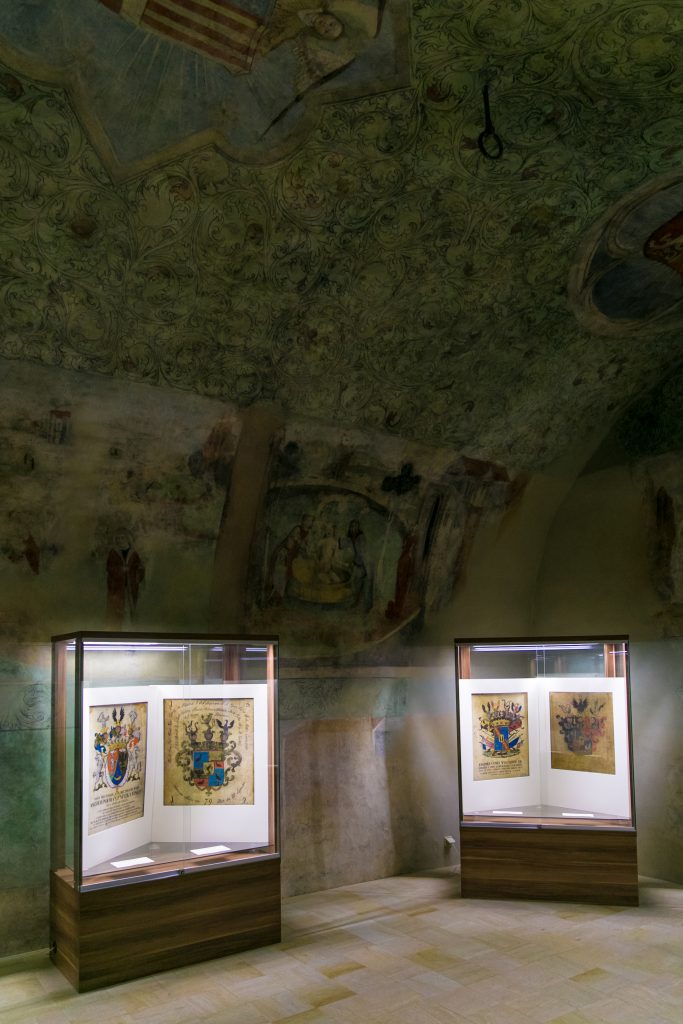Thurzo House is one of the oldest preserved secular buildings in Banská Bystrica. The earliest record of the house, found in archives, dates back to 1495, when the mining entrepreneur and engineer Jan Thurzo from Bethlanovce had bought two houses situated on the Banská Bystrica square from the mayor Ján Lang from Rožňava. The representative building on the square, for many years headquarters of Thurzo-Fugger Company, was created by joining two houses together.
The present appearance of the house dates from its restoration in the second half of the 16th century, when many elements inspired by Italian Renaissance appeared on the façade, for example so called sgraffito.
From the beginning of the 20th century, the ground floor spaces of the Thurzo House were used mainly for business purposes; that had a significant impact on shape and number of windows. The Green Room, unrecognisable with its partially destroyed, partially damaged wall paintings, served for one house owner also as a smokery.
The war at the beginning of 1945 changed the appearance of former headquarters of Thurzo-Fugger Company in Banská Bystrica. Being hit by an unexploded bomb, the roof and all vaults in the second floor collapsed, along with part of façade in courtyard. The house, being once a glorious house, an example of secular Renaissance architecture like from a textbook, turned into ruins, waiting for its fate to be demolished. Literally in the 11th hour, when the demolition decree had already been issued, an unexpected turn of events occurred. The discovery of wall paintings in the Green Room was one of the decisive reasons for stopping the planned demolition of the whole house.
After extensive monument restoration of the historic building, which was affected not only by war but also by ravages of time, a social science exposition focused on historical transformations of the Banská Bystrica region from the earliest times of prehistory, through the Middle Ages, Modern period till the early 20th century was opened in Thurzo House on 28th august 1958.




